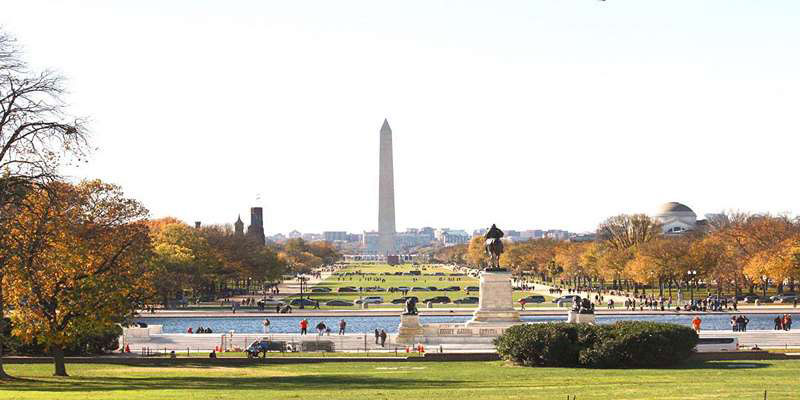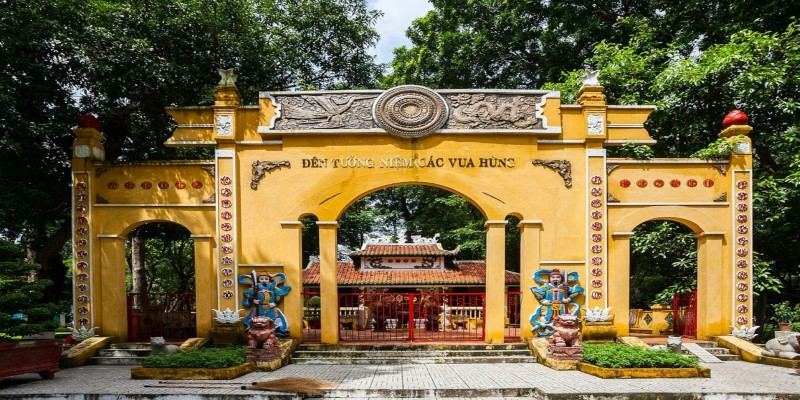Fascinating Facts About the Ganges River
Aug 06, 2024 By Sean William
The Ganges River, known as "Ganga" in India, is the country's largest and most sacred river. Originating from the Gangotri Glacier in the Indian Himalayas, it flows over 2,500 kilometers through northern India and Bangladesh before emptying into the Bay of Bengal. The Ganges holds profound cultural and religious significance for millions of Hindus, who regard it as a goddess and a symbol of purity. The river is central to many religious rituals, ceremonies, and festivals, serving as a lifeline for spiritual and everyday life in India. Its waters are believed to purify sins and bring salvation, making it a vital part of India's cultural heritage.
Geographical Facts and Origin
Source and Course of the Ganges River
The Ganges River originates from the Gangotri Glacier in the state of Uttarakhand, India, at an elevation of about 4,100 meters (13,450 feet). This glacier-fed river initially flows as the Bhagirathi River until it merges with the Alaknanda River at Devprayag, where it officially becomes the Ganges. The river then meanders southeastward through the fertile plains of northern India, passing major cities like Haridwar, Varanasi, and Patna, before entering Bangladesh. In Bangladesh, the river is known as the Padma, and it ultimately joins the Brahmaputra and Meghna rivers, forming a vast delta that drains into the Bay of Bengal.
Major Tributaries and Basin Coverage
The Ganges River basin is one of the largest and most fertile river basins in the world, covering an area of over 1 million square kilometers. It supports a dense population, providing water for agriculture, industry, and domestic use. Major tributaries of the Ganges include the Yamuna, Son, Ghaghara, Gandak, and Kosi rivers. These tributaries contribute significantly to the river's flow and are vital to the region's hydrology. The basin's diverse landscape, ranging from the Himalayan mountains to the flat plains, supports rich biodiversity and various ecosystems, making it a crucial area for both human and environmental sustainability.
Cultural and Religious Significance
The Ganges in Hindu Mythology and Rituals
The Ganges River holds a central place in Hindu mythology and spirituality. It is personified as the goddess Ganga, believed to have descended from the heavens to purify the Earth and its inhabitants. According to Hindu mythology, the river was brought down to Earth by King Bhagiratha to purify the souls of his ancestors and deliver them from their sins. This belief in the purifying power of the Ganges leads many Hindus to bathe in its waters, seeking to cleanse themselves of their sins and attain moksha, or liberation from the cycle of rebirth. The river is also considered a source of sustenance and blessings, and its waters are used in various rituals, from daily prayers to significant life events like births, marriages, and funerals.
Major Festivals and Events on the Ganges
The Ganges is the focal point of many important Hindu festivals and pilgrimages. One of the most significant is the Kumbh Mela, a mass pilgrimage and festival that occurs every 12 years at four different locations along the river, including Allahabad (Prayagraj), Haridwar, Nashik, and Ujjain. The Kumbh Mela attracts millions of pilgrims who come to bathe in the river's sacred waters, believing that this act will cleanse them of their sins and grant them blessings. Another important festival is the Ganga Dussehra, celebrated to mark the descent of the goddess Ganga to Earth. During this festival, devotees take a dip in the river, perform rituals, and offer prayers. The Ganges is also a significant site for the celebration of Diwali, with numerous ghats (riverfront steps) in cities like Varanasi being illuminated with oil lamps, creating a mesmerizing sight. These festivals and events highlight the deep spiritual connection between the river and the people, showcasing the Ganges' enduring cultural and religious importance.
Ecological and Environmental Aspects
Biodiversity in the Ganges River Basin
The Ganges River Basin is home to a rich diversity of flora and fauna, supporting numerous species that rely on its waters for survival. This ecosystem includes freshwater dolphins, such as the endangered Gangetic dolphin, various species of turtles, fish, and migratory birds. The river's wetlands and mangroves provide crucial habitats for these species, contributing to the region's biodiversity. The Ganges also plays a vital role in sustaining agricultural practices, which depend on its water for irrigation.
Challenges and Conservation Efforts
Despite its ecological significance, the Ganges faces severe environmental challenges, including pollution from industrial waste, agricultural runoff, and untreated sewage. These pollutants threaten the river's biodiversity and the health of millions who rely on its waters. In response, initiatives like the National Mission for Clean Ganga (NMCG) have been launched to improve water quality and promote sustainable management practices. Efforts include establishing sewage treatment plants, promoting organic farming, and engaging local communities in conservation activities. These measures aim to restore the ecological balance of the Ganges and ensure its sustainability for future generations.
Historical and Economic Importance
The Ganges River has been a lifeline for agriculture and commerce in India for centuries. Its fertile plains support the cultivation of staple crops like rice, wheat, and sugarcane, making the region one of the most agriculturally productive areas in the country. The river also serves as a critical waterway for transporting goods and people, facilitating trade and economic activity along its course. The Ganges' role in irrigation and transportation has been vital in sustaining the livelihoods of millions and contributing to the region's economic development.
Conclusion
The Ganges River, India's largest and most sacred river, is a vital part of the country's cultural, ecological, and economic landscape. Its waters sustain millions, support diverse ecosystems, and hold profound spiritual significance for Hindus. However, the river faces significant environmental challenges that require urgent attention and action. Efforts to clean and conserve the Ganges are crucial for preserving its legacy and ensuring it continues to nourish and inspire future generations. The enduring importance of the Ganges calls for a collective commitment to protect and restore this iconic river.

JBudget Travel Guide: How to Explore Stockholm on a Budget
How to visit Stockholm on a budget with practical tips on affordable accommodations, dining, and attractions. Explore the best ways to enjoy the city without breaking the bank

JExploring 6 Stops on the Delhi-Jaipur Highway to Freshen Up
Get the most out of your road trip experience by using our guide to the greatest dhabas along the picturesque Delhi-Jaipur Highway.

JFree Things to do in Washington, D.C.
Explore the many free attractions and events available in Washington, D.C.! From visiting monuments and memorials to attending outdoor performances and festivals, find out all that this city has to offer without spending a dime.

JTop Attractions in Bordeaux, France: The 11 Best Things to Do
Explore the 11 best things to do in Bordeaux, France! Visit La Cité du Vin, stroll through the Old Town, and enjoy panoramic views from Pey-Berland Tower. Discover the best vineyards, admire the Grand Théâtre, and taste local delicacies. Plan your perfect Bordeaux trip now!

JBest Summer Holiday Destinations
Discover the top summer holiday destinations in the world. Explore the best spots for sun, adventure, and relaxation.

JUnveiling the Rich History and Charm of Sensō-ji Temple in Asakusa
Discover the rich history and cultural significance of Sensō-ji Temple in Asakusa, Tokyo. Learn about its architecture, rituals, and must-see events.

JPerfect Girlfriend Getaway Guide to Las Vegas
Planning a girlfriend getaway to Las Vegas? This guide covers everything you need to know, from fun activities and scenic spots to dining options and transportation tips. Discover the best tips for packing, sightseeing, shopping, and more to make your Las Vegas trip unforgettable.

JExploring the Green Heart of Saigon: Tao Dan Park
Find out Tao Dan Park in Ho Chi Minh City, a green lung and urban oasis offering lush landscapes, cultural experiences, and recreational activities for locals and tourists alike.
 clearinfoy
clearinfoy